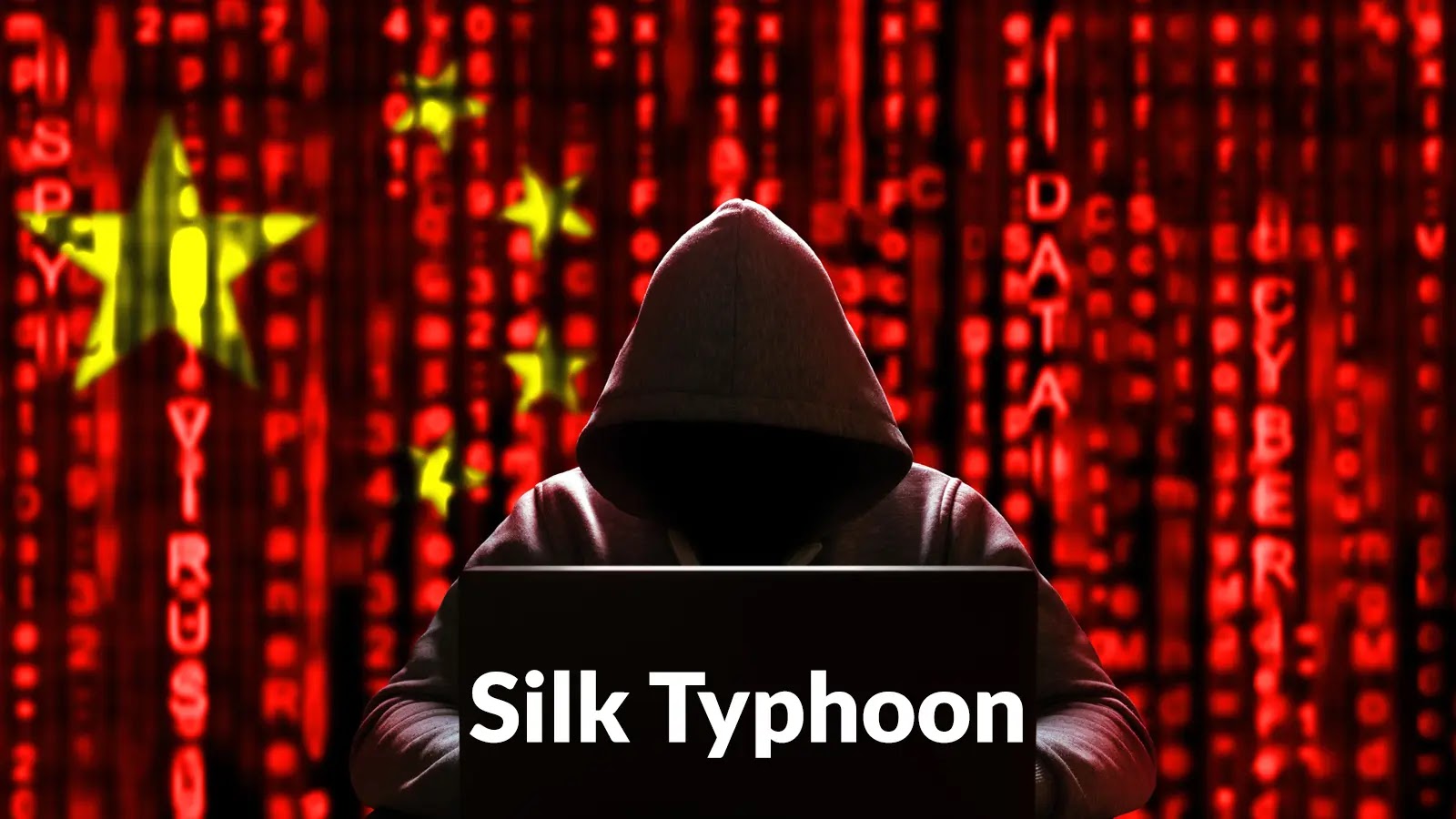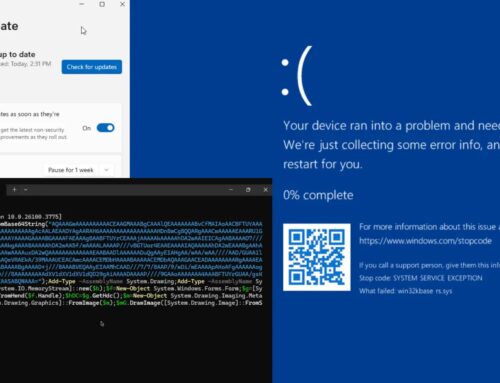
Chinese Silk Typhoon Hackers Filed 10+ Patents for Highly Intrusive Hacking Tools
In the high-stakes world of cybersecurity, understanding the capabilities and strategies of state-sponsored threat actors is paramount. Recent revelations concerning the Chinese state-sponsored hacking group, Silk Typhoon, have sent ripples through the intelligence community, exposing an alarming leap in their offensive cyber arsenal. It’s not just about sophisticated attacks anymore; it’s about the very foundational development of highly intrusive cyber espionage tools, solidified through official patent applications.
The Alarming Reality: Patents as a Window into Offensive Cyber Capabilities
The news that Chinese state-sponsored hackers, specifically those affiliated with the notorious Silk Typhoon group, have filed over ten patents for advanced hacking tools is unprecedented. This isn’t merely an operational tactic; it signifies a strategic, long-term commitment to developing proprietary cyber warfare capabilities. These patent applications, reportedly filed by entities with direct links to China’s Ministry of State Security (MSS), provide a chilling glimpse into a systematic approach for creating potent and evasive cyber espionage and data collection technologies.
Silk Typhoon: A Name Synonymous with Sophistication
The Silk Typhoon group has long been recognized for its persistent and sophisticated cyber operations targeting critical infrastructure, government agencies, and defense contractors globally. Their past activities have highlighted a keen ability to penetrate hardened networks, exfiltrate sensitive data, and maintain long-term persistence. The filing of patents for tools underscores a shift from simply utilizing existing vulnerabilities or commercial exploits to actively engineering new, highly intrusive methods of digital intrusion and data exfiltration. This level of technical investment suggests a deep, state-backed research and development effort.
Beyond Exploitation: The Evolution of Intrusive Technologies
The nature of these patented tools is particularly concerning. The source information indicates they are designed for “highly intrusive forensics and data collection technologies.” This implies capabilities far beyond typical malware or phishing campaigns. We can infer these tools likely include techniques for:
- Advanced Forensic Evasion: Tools designed to delete or manipulate forensic trails, making attribution and incident response significantly more challenging.
- Deep System Intrusions: Methods for gaining access to kernel-level functionalities or firmware, allowing for persistent and undetectable presence.
- Automated Data Exfiltration: Sophisticated mechanisms for identifying, encrypting, and exfiltrating vast amounts of sensitive data with minimal footprint.
- Supply Chain Compromise Tools: Methods to embed malicious code or backdoors into legitimate software or hardware during manufacturing or distribution.
- Zero-Day Discovery Automation: While not explicitly stated, the R&D investment could extend to automated tools for identifying new, undisclosed vulnerabilities (zero-days) in widely used software and hardware.
The ability to patent these tools suggests a level of innovation and proprietary development that few other state-sponsored groups openly acknowledge, let alone legally protect. This move blurs the lines between conventional industrial espionage and state-sanctioned cyber warfare, utilizing a legal framework to secure ownership over offensive cyber weapons.
Implications for Global Cybersecurity
The ramifications of Silk Typhoon’s patented tools are far-reaching. For organizations and governments worldwide, this development necessitates a re-evaluation of current defensive postures. The implications include:
- Increased Difficulty in Detection: If these tools are designed with forensic evasion and deep intrusion capabilities, traditional intrusion detection systems (IDS) and endpoint detection and response (EDR) solutions may struggle to identify their presence.
- Enhanced Persistence: Patented methods for persistent access could mean that even after an initial breach is detected and remediated, the threat actor might retain hidden footholds within a network.
- Strategic Advantage in Cyber Espionage: Owning the intellectual property for such tools grants China a significant advantage in intelligence gathering and state-sponsored industrial espionage.
- Escalation of Cyber Warfare: The public patenting of these tools could be seen as a form of deterrence or a signal of capability, potentially contributing to a further escalation in the global cyber arms race.
Remediation Actions and Proactive Defense
Given the sophisticated nature of the tools being patented, organizations must adopt a robust, multi-layered cybersecurity strategy. While no specific CVEs are associated with these hypothetical patented tools given their nature as proprietary offensive instruments, the general principles of defense against advanced persistent threats (APTs) apply.
- Strengthened Endpoint Detection and Response (EDR)/Managed Detection and Response (MDR): Implement and continuously monitor advanced EDR/MDR solutions capable of behavioral analysis and anomaly detection rather than relying solely on signature-based defenses.
- Proactive Threat Hunting: Regularly conduct proactive threat hunts within your networks utilizing advanced security analytics and threat intelligence feeds. Assume compromise and actively look for subtle indicators of compromise (IoCs).
- Network Segmentation and Least Privilege: Implement strict network segmentation to limit lateral movement and enforce the principle of least privilege for all users and systems.
- Supply Chain Security Audits: Enhance scrutiny over your supply chain, particularly for critical hardware and software components. Conduct thorough audits and integrity checks.
- Advanced Identity and Access Management (IAM): Implement strong multi-factor authentication (MFA) across all systems and services, and regularly review access permissions.
- Patch Management and Vulnerability Management: Maintain a rigorous patch management program, prioritizing critical vulnerabilities, and conduct regular vulnerability assessments and penetration testing.
- Employee Training and Awareness: Educate employees on advanced social engineering tactics, spear phishing, and the importance of reporting suspicious activities.
- Robust Incident Response Plan: Develop and regularly test a comprehensive incident response plan, ensuring clear communication channels and defined roles.
Table of Defensive Tools for Advanced Threats
| Tool Name | Purpose | Link |
|---|---|---|
| CrowdStrike Falcon Insight | Advanced EDR for threat detection and response | CrowdStrike Falcon Insight |
| Microsoft Defender for Endpoint | Comprehensive endpoint security platform | Microsoft Defender for Endpoint |
| Splunk Enterprise Security | SIEM for security analytics and threat hunting | Splunk Enterprise Security |
| Mandiant Advantage | Threat intelligence and incident response services | Mandiant Advantage |
| Tenable.io | Vulnerability management and attack surface management | Tenable.io |
Conclusion: A New Era of State-Sponsored Cyber Capabilities
The revelation of Silk Typhoon’s patented hacking tools marks a significant shift in the landscape of state-sponsored cyber operations. It underscores a strategic investment by China in developing proprietary, highly intrusive capabilities, moving beyond reactive exploitation to proactive invention in the cyber realm. For cybersecurity professionals, this means an increased need for vigilance, adaptive defensive strategies, and a collaborative approach to threat intelligence sharing. Understanding these patented tools, even without direct access, provides critical insight into the evolving nature of advanced persistent threats and the sophisticated adversaries we face.





